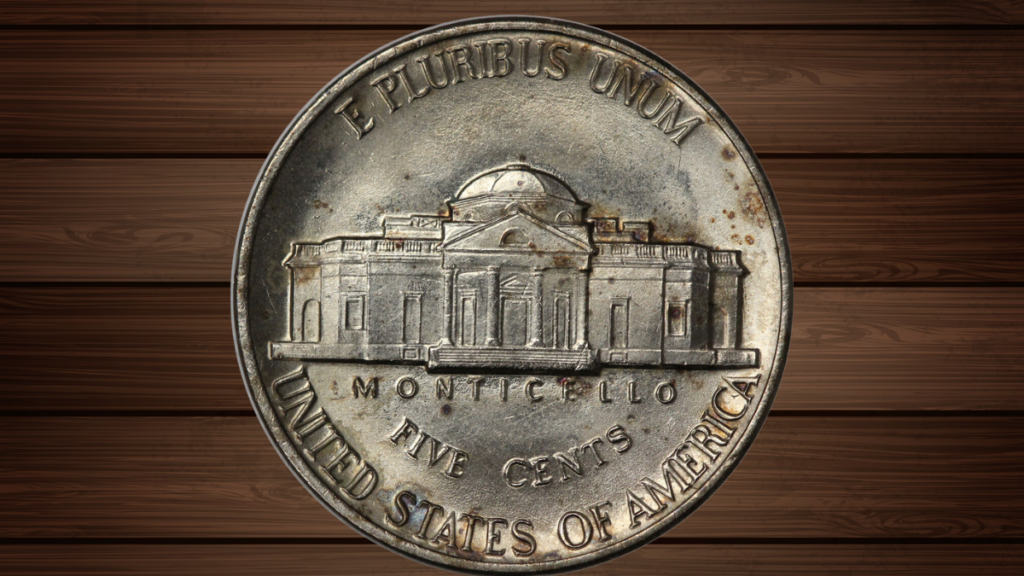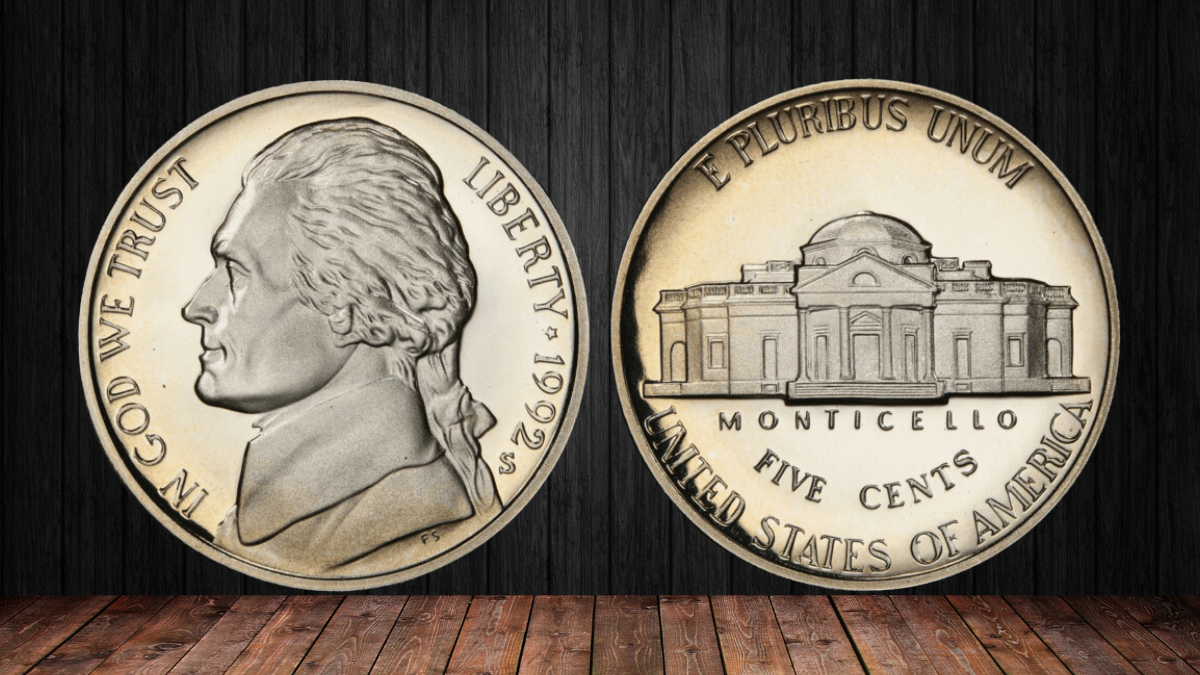The 1992 Jefferson nickel is more than just a five-cent coin; it’s a piece of history that many collectors are eager to learn about.
Produced by the US Mint over 30 years ago, this nickel is part of the Jefferson series, which is one of the most popular coins in the United States.
Composition of the 1992 Jefferson Nickel
The 1992 nickel is made from a mixture of 75% copper and 25% nickel. This composition has been the standard since the Jefferson nickel was introduced in 1938, with one exception during World War II (1942-1945).
During the war, the US government reduced nickel usage in coins due to its importance in the war effort. As a result, wartime nickels contained 56% copper, 35% silver, and 9% manganese.
A typical 1992 Jefferson nickel weighs 5 grams and has a diameter of 21.21 mm with a plain edge.
2015-W Mamie Eisenhower First Spouse $10 Gold Coin: A Collector’s Must-Have
Historical Significance

The Jefferson nickel was introduced to replace the Buffalo nickel, which, despite its beauty, proved difficult to produce due to rapid wear on the minting dies. To design the new coin, the US Mint held a competition.
The winning design, created by Felix Schlag, features the face of Thomas Jefferson, the third president of the United States, on the front. The back showcases Monticello, Jefferson’s home.
The front of the coin includes the inscriptions:
- LIBERTY
- IN GOD WE TRUST
- 1992
- Mint mark
- Designer’s initials
The reverse side includes:
- E PLURIBUS UNUM
- MONTICELLO
- FIVE CENTS
- UNITED STATES OF AMERICA
Discover Hidden Treasure: Rare Dollar Coins That Could Be Worth Millions!
Varieties of the 1992 Jefferson Nickel
There are three main varieties of the 1992 Jefferson nickel, distinguished by their mint marks, which indicate where each coin was produced:
- 1992 D Jefferson Nickel (Denver Mint)
- Mintage: 450,565,113
- Value: $0.28 to $1.13 (circulated)
- 1992 S Proof Jefferson Nickel (San Francisco Mint)
- Mintage: 4,176,560
- Value: $3.89 or more (Mint State)
- 1992 P Jefferson Nickel (Philadelphia Mint)
- Mintage: 399,552,000
- Value: $1.71 to $2.81 (circulated)
The Denver Mint produced the largest quantity, making the 1992 D nickel the most common variety. In contrast, the 1992 S proof coins, which are shinier and more attractive, are less common but more valuable.
Common Errors in the 1992 Jefferson Nickel
Due to the high volume of coins produced in 1992, various error coins have emerged. Some of these errors include:
- Lamination Error: Occurs when foreign material mixes with the metal, causing parts of the coin to look different.
- Clad Error: This happens when the nickel cladding does not cover the entire coin, resulting in a portion that is a different color.
- Die Crack: As minting dies wear out, they can crack, leaving marks on the coins.
- Doubled Die Errors: When a coin is struck twice at different angles, it results in doubled images.
- Strike-Through Error: This occurs when debris gets between the die and coin during minting, leaving an impression.
- Filled Mint Mark: Sometimes, mint marks appear less detailed than they should due to blockages in the minting die.
What Is the Value of the 1992 Jefferson Nickel Today?

Despite being made primarily of copper and nickel, the 1992 Jefferson nickel is generally worth only its face value of 5 cents. However, in circulated condition, it can fetch between $0.10 and $0.20. Uncirculated coins might be sold for about $1.71 to $2.81, while proof coins are valued at approximately $3.89.
Some rare varieties can be worth much more. For instance, auction records show the following sales:
- A 1992 D Jefferson Nickel sold for $3,760.
- A 1992 P Jefferson Nickel went for $1,725.
- A 1992 S Proof Jefferson Nickel fetched $940.
These examples highlight that while most 1992 nickels are not valuable, rare versions or coins in excellent condition can command high prices.
15 Mind-Blowing Tricks to Instantly Spot Fake Coins—Scammers Hate
Grading System for Coins
Coins are graded using the Sheldon scale, which ranges from 1 to 70. A higher grade means better quality. Coins made for circulation are labeled as MS, while those made for collectors are marked as PR. The highest grade, MS70 or PR70, is very rare. For instance, a PR-70 nickel was sold for nearly $1,000 in 2013.
To officially grade a coin, you should consult professional services like PCGS or NGC.
Where to Buy or Sell the 1992 Jefferson Nickel
Finding the 1992 Jefferson nickel is quite easy due to its large production numbers. You can visit coin shops, antique stores, or online marketplaces to sell your coin.
Whether you’re a collector or just curious, learning about the 1992 Jefferson Nickel opens the door to a fascinating aspect of American history.

